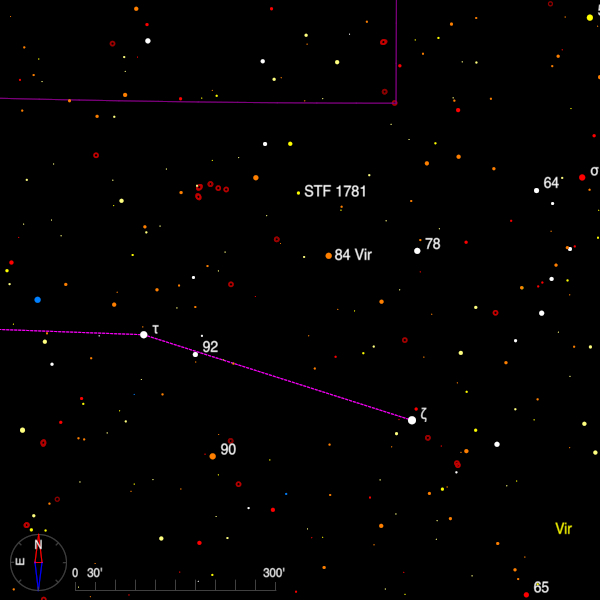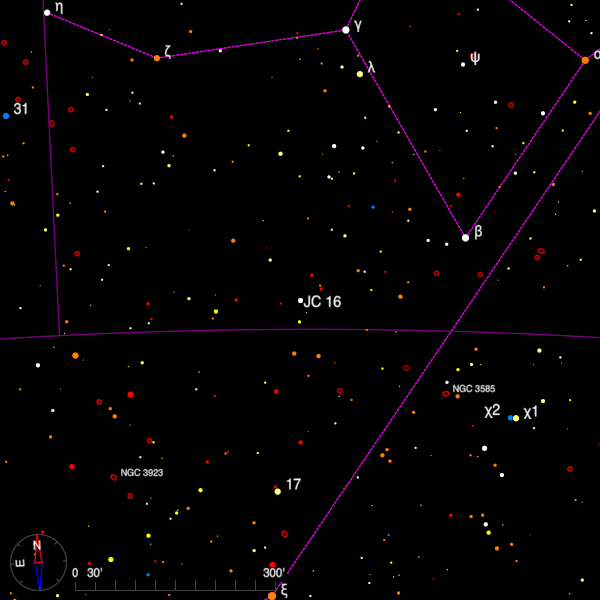April 2022 - Double Star of the Month
The two pairs in this month's column have a common feature. Each is accompanied at a distance by a ninth magnitude companion.
STF 1781 (13 46 06.75 +05 05 56.1) is a visual binary with a period of 179 years which is 206 light-years away, according to Gaia EDR3. It can be found in Virgo, near the border with Boötes, about 2 degrees NE of 84 Vir, itself a double star (5.6, 8.3, 227 degrees, 2".7).

Although the components of STF1781 are rather faint (V magnitudes are 7.9 and 8.1) the current position, 200 degrees and 1".1, indicates that the stars should be resolvable in 15-cm aperture. They are currently closing and by 2050 they will be separated by 1".2. I have not observed this system - in the late 1970s the stars were less than 0".3 apart and have been widening ever since. More recently Dr. Andrei Tokovinin found a common proper motion companion of magnitude 9.8 at PA 128 degrees and distance 1594".
The primary of JC 16 (11 29 38.35 -24 27 50.6) is just above naked-eye visibility at V = 5.8. Eight arc-seconds away in PA 82 degrees is the B component of V = 8.6. The catalogue number tells us it was discovered by Captain Jacob from India in 1847. He also added a third star of V = 8.9 at 120".

The Washington Double Star Catalog (WDS) notes that of 2018 this had increased to 166", but it is difficult to reconcile this large change with the very similar proper motions that all three stars have. In fact Gaia EDR3 gives a significantly different parallax for B than it does for A and C.
The coarse triple is a fine sight in small apertures.
Bob Argyle - Double Star Section Director